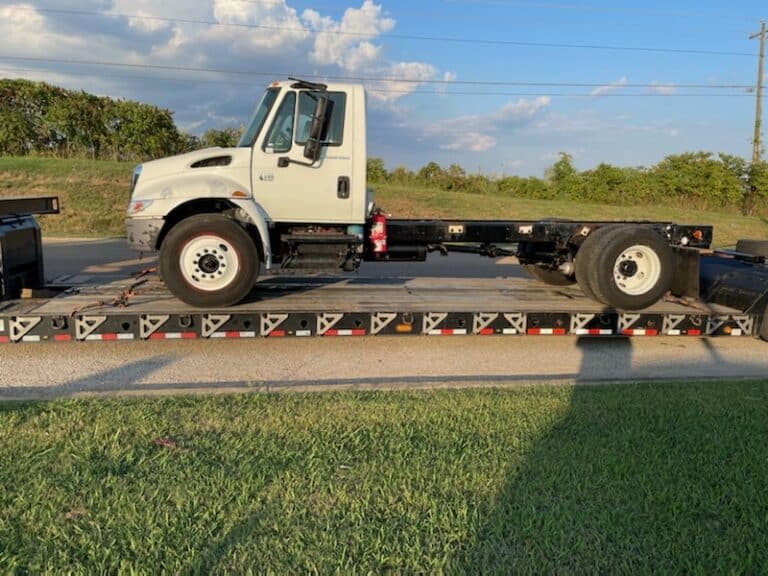Why are Lowboy Trailers Popular for Heavy Equipment Transport

William Thomas / January 2021
A lowboy trailer is one of the most common trailers in the heavy transport and trucking industry. It has the characteristics of a semi-trailer and a double-drop system combined. The first drop is located right behind the gooseneck, while the other is situated before the wheels. Ideally, they are used to ship heavy equipment and machinery, including tractors, excavators, backhoe loaders, bulldozers, among other heavy loads. These trailer types are more flexible than flatbeds and can accommodate heavy loads of up to 12 feet in height, weighing 40,000 to 80,000 pounds. That means that they can effortlessly transport and deliver loads too tall and heavy to haul in a flatbed trailer. These trailer types are also incredibly compatible with other loads making them perfect options for carriers in the agriculture, construction, oils and gas, and forestry industries.
Lowboy trailer decks can be lowered closer to the ground, facilitating the easy loading of such oversized loads as construction equipment. Besides, they can either be loaded from either the front or rear, depending on the lowboy trailer type chosen. Alternatively, shippers might decide to place the trailer under the shipment then lift it for easy and safe loading.
Lowboy Trailer Maximum Dimensions
- The maximum low bed well length is between 4 to 26.6 feet
- The maximum legal width is 8.5 feet
- The maximum lowboy well height is between 18 to 24 inches
- The maximum legal freight height is between 11.5 to 12 feet
- Their maximum legal overall load height is 14 feet
A lowboy trailer must comply with these dimensions as specified by the Federal size regulations. Failure to do this can attract hefty fines and even lead to unnecessary delays.

Transport Your Lowboy Trailer Today
Heavy Equipment Transport is always available for a quote. Fill out the form or give us a call now! (888) 730-2951
Reasons Lowboy Trailers Popular in the Heavy Equipment Transport
- Stability – Ideally, lowboy trailers have a low center of gravity. This makes it more stable while delivery of heavier farm equipment transports compared to other trailers. Besides, they come with a broader cargo plane which means that you can rely on these trailers to keep your shipment safe throughout the transit.
- Versatility – As aforementioned, lowboy trailers come in an incredibly versatile design. As such, they can seamlessly haul even the heaviest shipments without compromising the driver’s, cargo, or shipping equipment safety standards. Besides, these trailers have a low profile, making it easy for them to comply with height restrictions, facilitating cargo transportation from one point to another with no legal issues.
Common Types of Lowboy Trailers We Use for Heavy Equipment Trucking
Fixed Gooseneck Lowboy Trailers
These types of lowboy trailers have the lightest deck and a more extended deck. They have low-profile tires, sit lower to the ground, and are usually equipped with drop ramps at the rear for easy loading. However, given their fixed style, loading items on this trailer might appear more challenging than other types, such as removable goosenecks.
Removable Gooseneck Lowboy Trailers
This trailer is highly versatile, making it the most commonly used lowboy trailer for heavy equipment transport. It is a perfect option when hauling motorized equipment. This is because of its style, making it easy to drive, roll, push or pull such cargo types onto the trailer bed. Alternatively, you can load cargo from the top when necessary. These lowboy trailers have detachable goosenecks, which can be removed to create a ramp facilitating easy loading and offloading. The gooseneck can either be mechanically detachable or hydraulic detachable. The hydraulic detachable types are pretty easy to detach and make it easy to adjust the height of the trailer. However, they require more specialized care and maintenance than their counterparts due to their hydraulic systems.